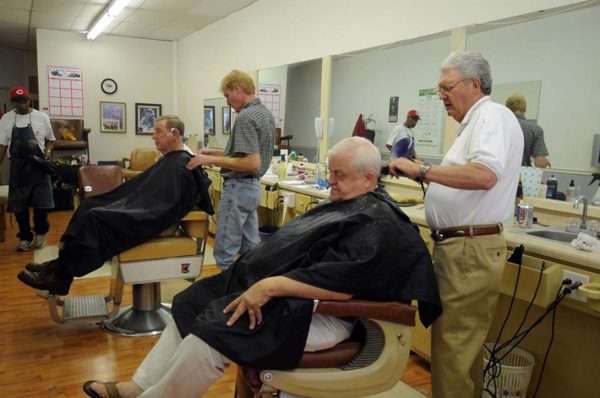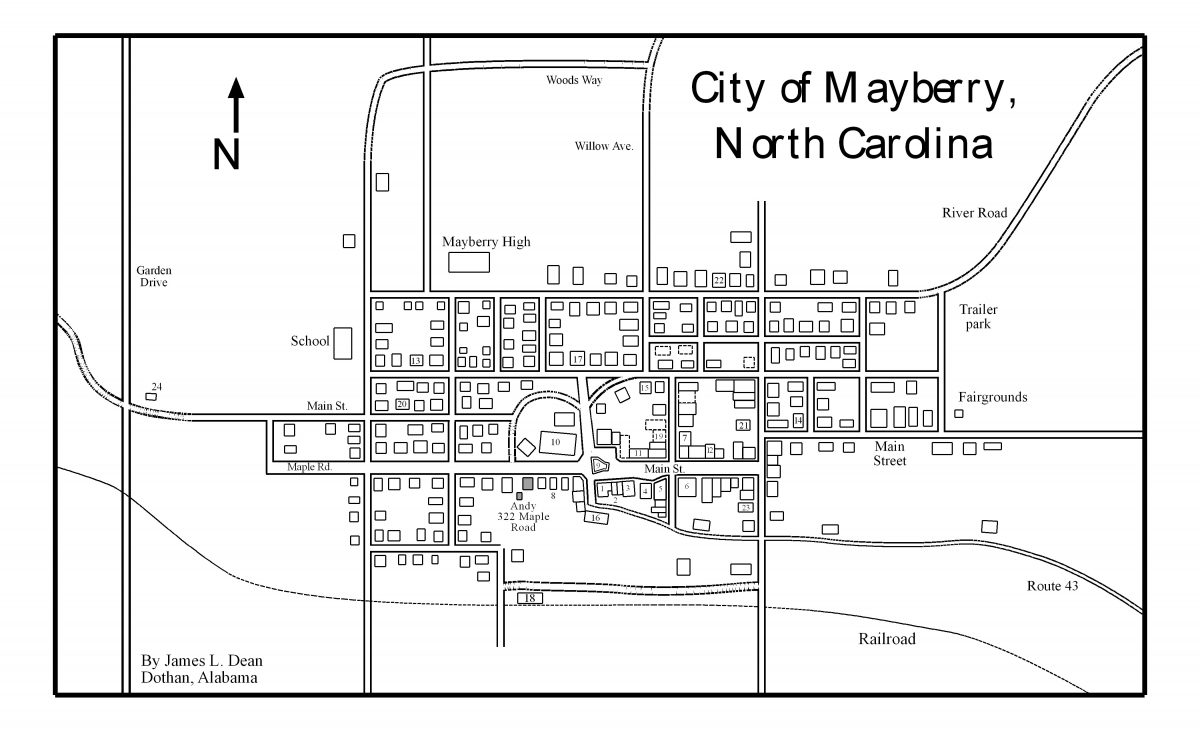Why Andy and Mayberry live on in cultural memory

The passing of Andy Griffith last week prompted an outpouring of love and respect for the man and his life’s work in movies, television, and even gospel music. Yet it was his role as Sheriff Andy Taylor in The Andy Griffith Show that received the greatest response from writers and fans alike.
That’s understandable. Andy Taylor was such an iconic television character it was as if Taylor and Griffith were one. Even if Griffith disagreed with that assessment, which he did on several occasions, it’s what fans of the show believe.
Fans also want to believe that Griffith’s hometown of Mount Airy, N.C., was the true setting for the show. Certainly, the show made numerous references to Mount Airy and other N.C. towns. Yet in the end, whether it was or wasn’t doesn’t matter much, because the show’s fans believe it to be true: Mayberry is Mount Airy, and Mount Airy is Mayberry.
One important factor in the show’s lasting appeal is that, unlike today’s reality TV programs (a large number of which are set in the South), The Andy Griffith Show didn’t trade in negative stereotypes about the region or Southerners. When there were hillbillies on the show, like the Darlings or Ernest T. Bass, they were fully developed characters with endearing, and likeable qualities. Female characters, particularly Andy’s girlfriends Ellie Walker and, later, Helen Crump, were educated professional women who had their own homes. In some episodes, their dialogue suggests that they were well aware of the feminist movement of their day.
I was recently asked whether the show’s portrayal of the region was realistic or accurate. My response is that in some ways the question does not matter. Television is meant to entertain people, which the show did very successfully. But if we want to pursue the idea, we can think about this from two different angles: one is what Griffith may have intended to depict, the other is about the reality that existed in Mount Airy.
Most people associated with the show acknowledge that it reflected Andy Griffith’s vision, which he has repeatedly said was to tell universal stories about goodness that reflected the values he grew up with. Who are we to argue that what he presented was not an accurate representation of his own experience?
But consider Mayberry, the show’s setting. Was it realistic in its presentation of a small Southern town like Mount Airy? 
One could argue both for and against the idea that the presentation was realism. On one hand, there appear to be no African-Americans living in Mayberry. Oprah Winfrey, a fan of the show, once asked, “Where are the black people?” Historically, Mount Airy has had a black population, albeit a small one. So one could argue the show was not realistic. Yet it might also be that Griffith chose to depict the nostalgic South of his youth, in which he grew up in a primarily white community. If so, then one could say the show was realistic.
What we might all agree on is that Mayberry did not represent the South of the 1960s. Throughout its run, The Andy Griffith Show regularly ranked among the top 10 most watched shows. It offered a nostalgic portrayal of the region – one that countered the negative images of the region present in the civil rights coverage that millions of viewers were also watching on the evening news. The sit-in movement began in Greensboro, just down the road from Mount Airy. Yet in Mayberry, the worst thing to happen might be a prisoner on the loose from the state penitentiary who, by the end of the show, will be caught by Sheriff Taylor.
The point is that it was Griffith’s intention to entertain people through the stories and characters who lived in Mayberry – not make a political statement about civil rights. Moreover, many of the show’s fans, like Oprah Winfrey, are African American. The show has universal appeal.
Television coverage of Griffith’s death inevitably included interviews with residents of Mount Airy, still a small Southern town. Interestingly, one woman interviewed by a Charlotte television station was from New Jersey. She told the reporter that she loved the show so much that after attending Mayberry Days – the town’s annual celebration of the show – she moved there. She wanted to live in a place where people still maintained good values and looked after one another.
What this woman sought via her love of The Andy Griffith Show was to return to a different time and place, spurred by a nostalgic craving for a bygone America, but one she thinks may still exist – in the South, in Mayberry.
Read Karen Cox’s blog, PopSouth, by clicking here.
Karen Cox is a history professor at UNC Charlotte. She can be reached at kcox@charlotte.edu.
Karen L. Cox